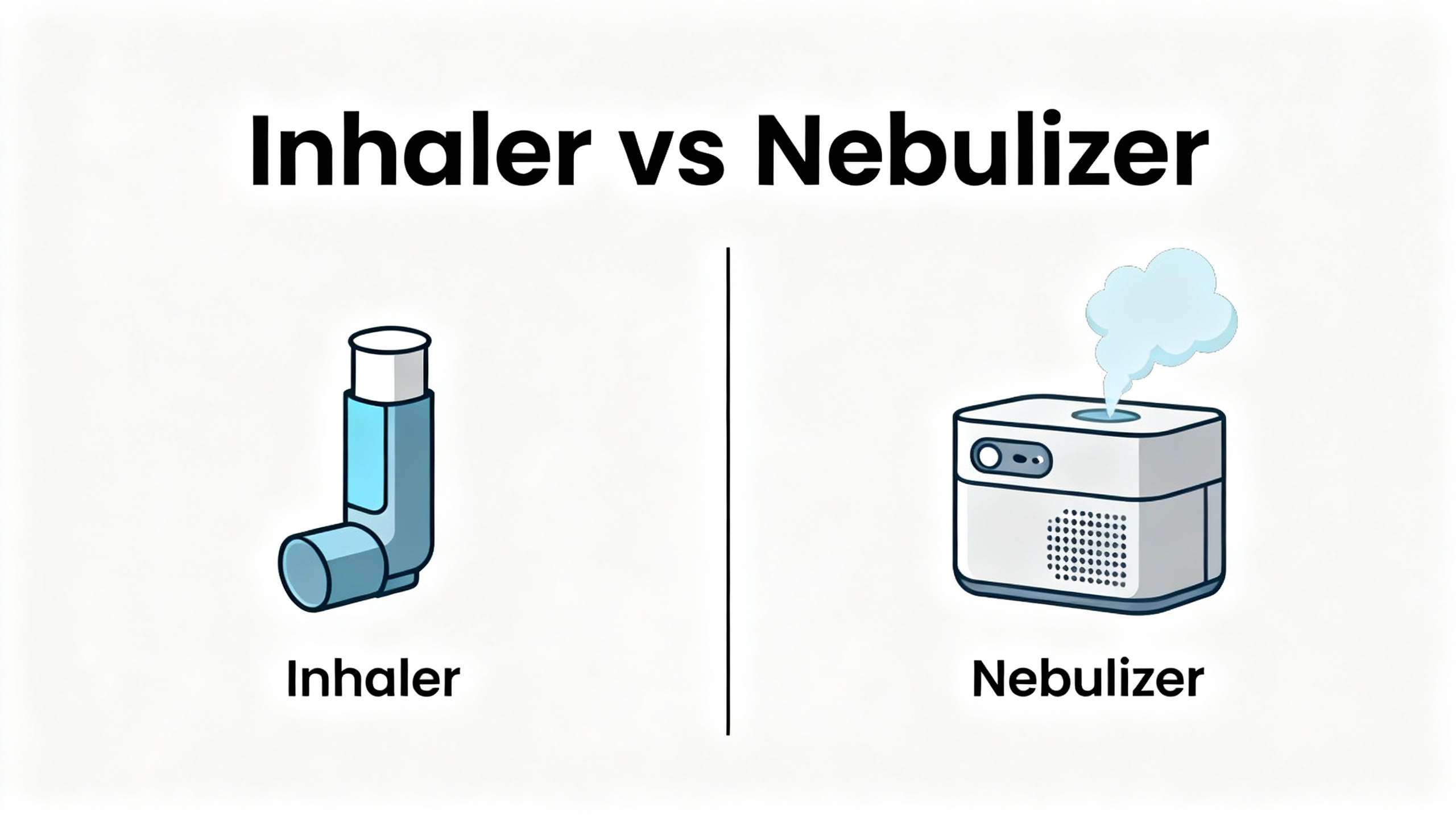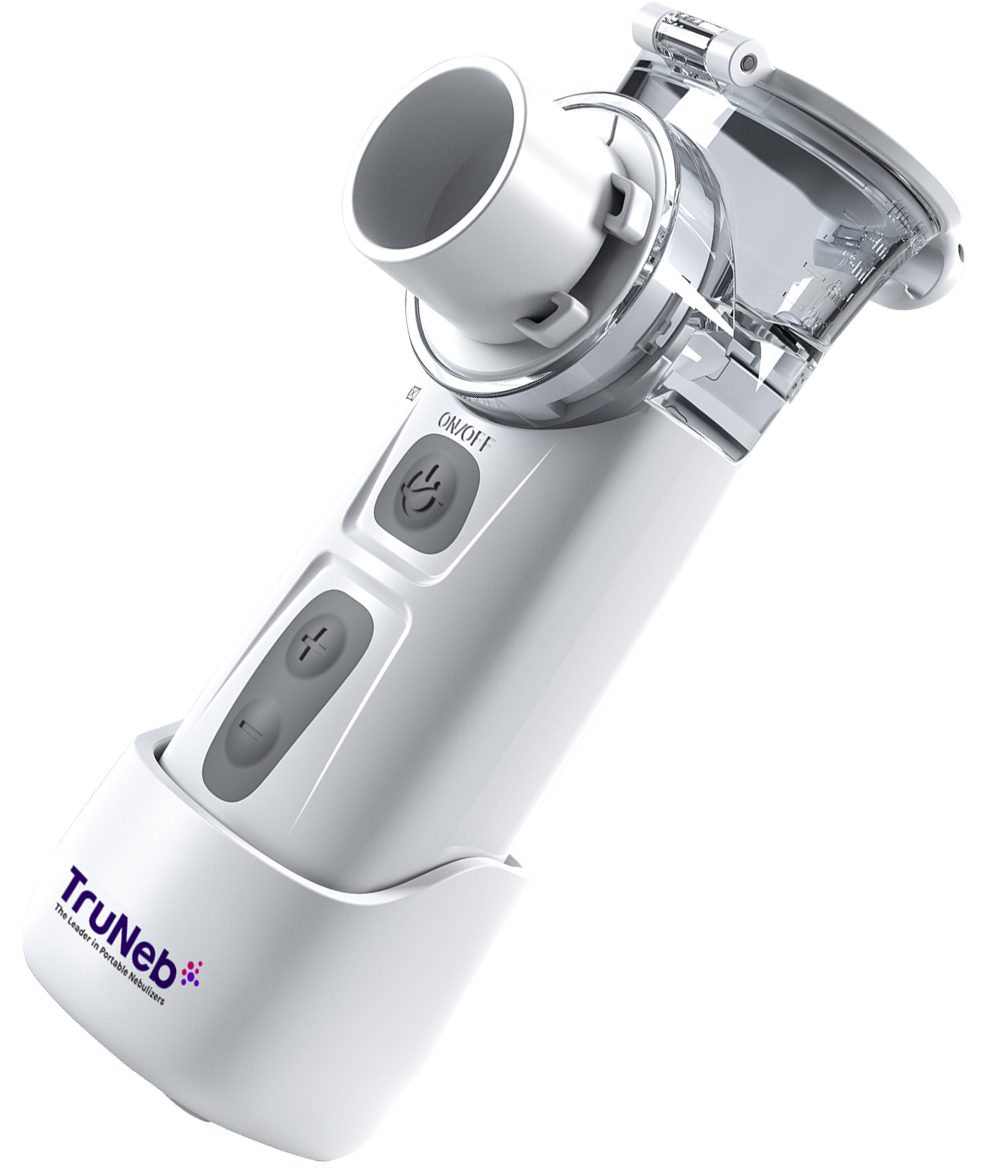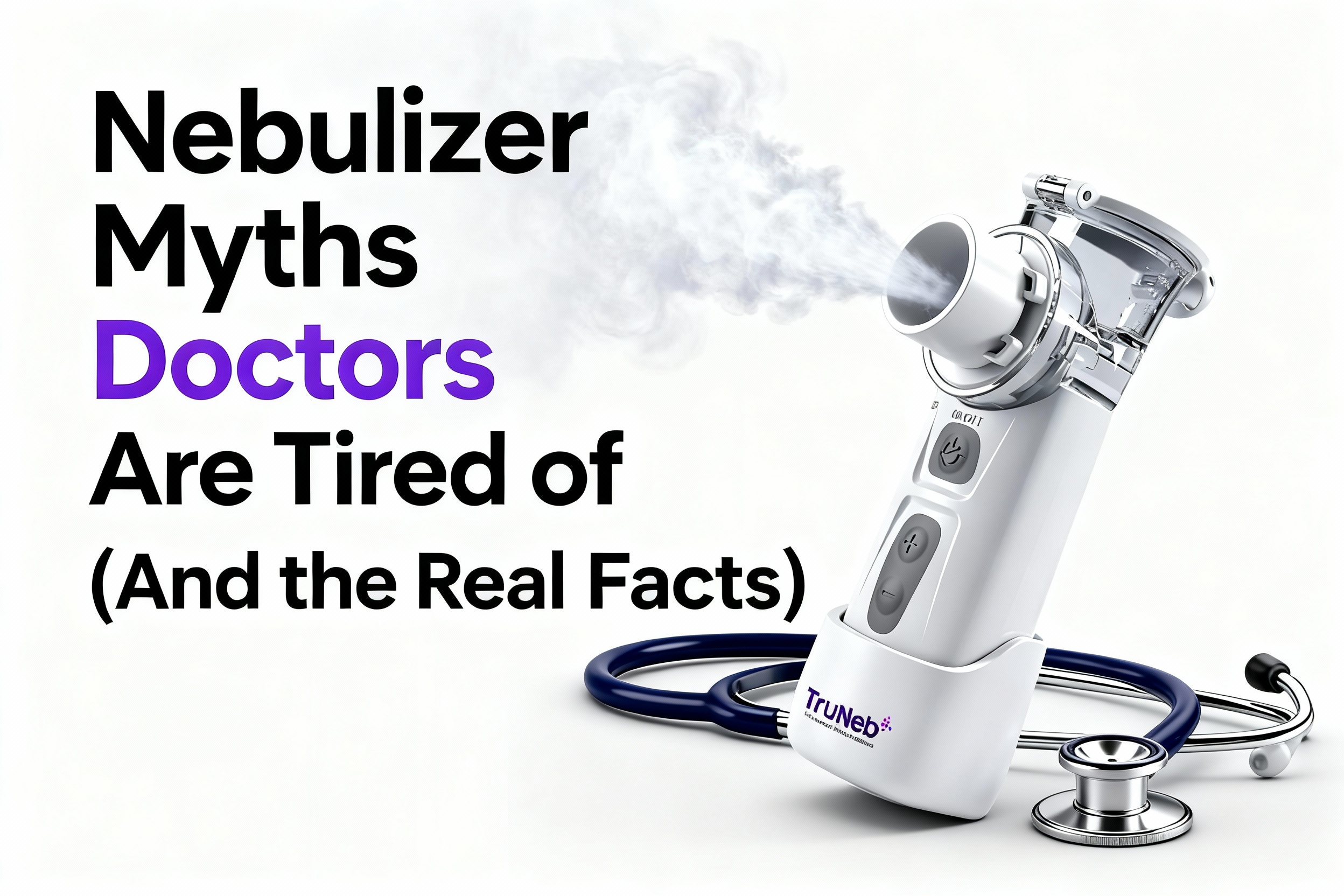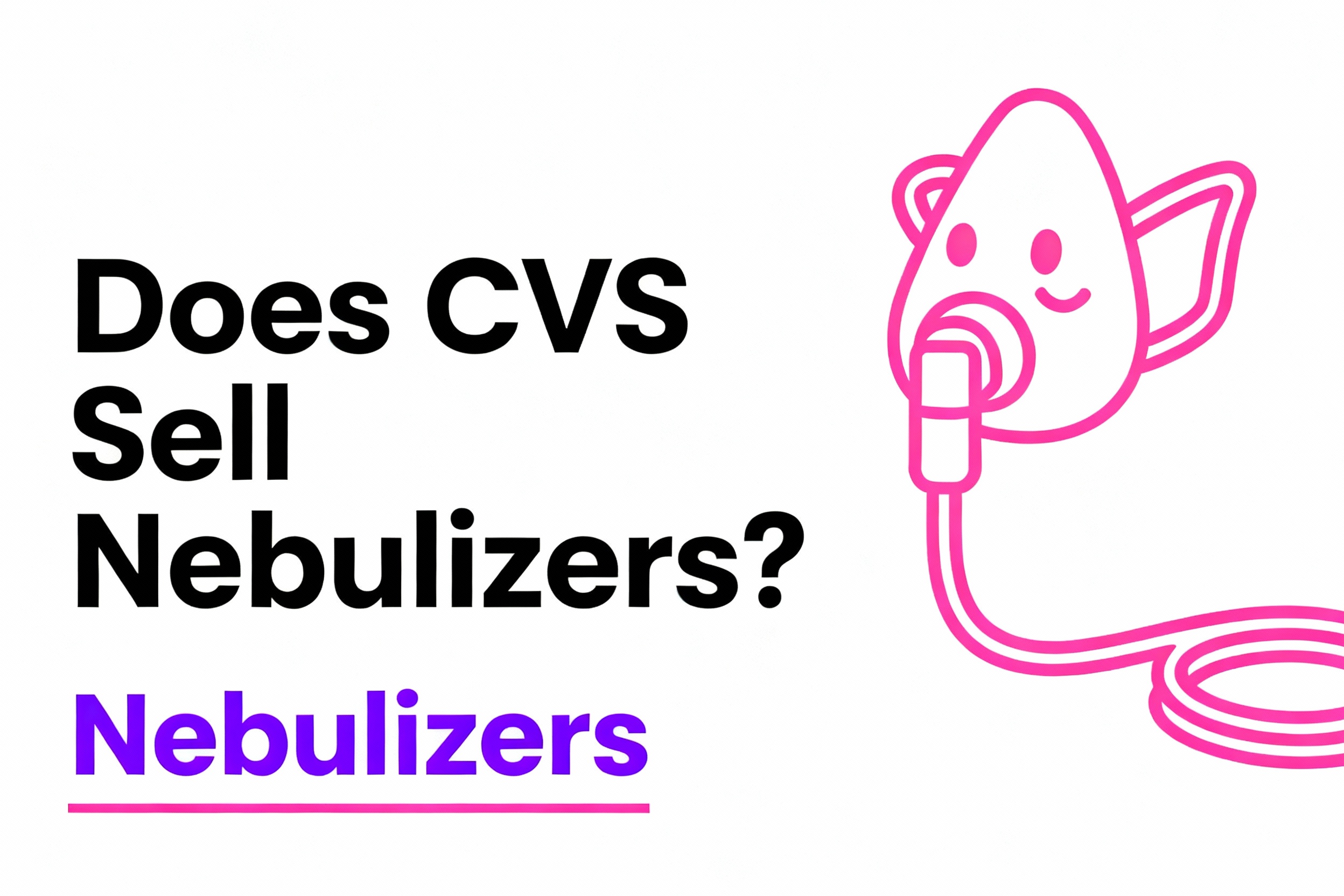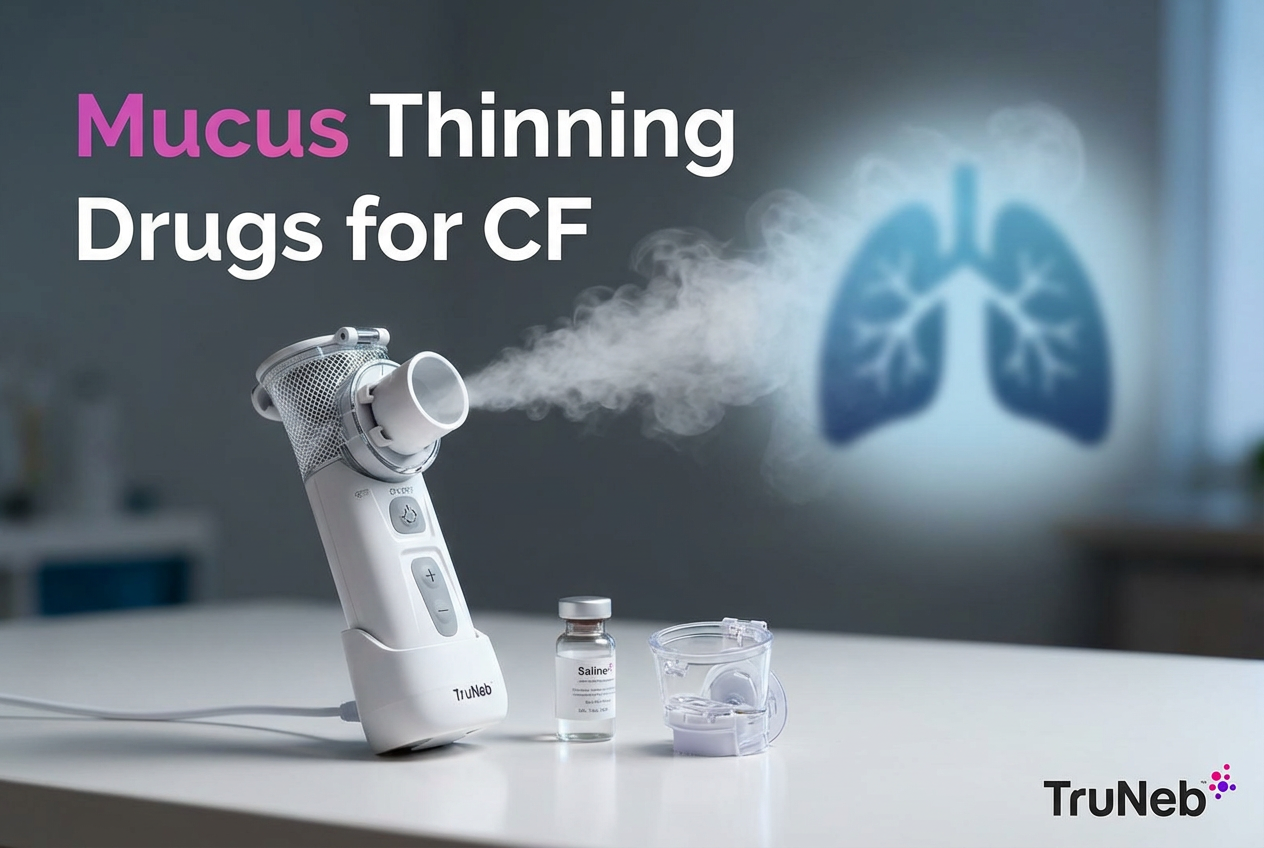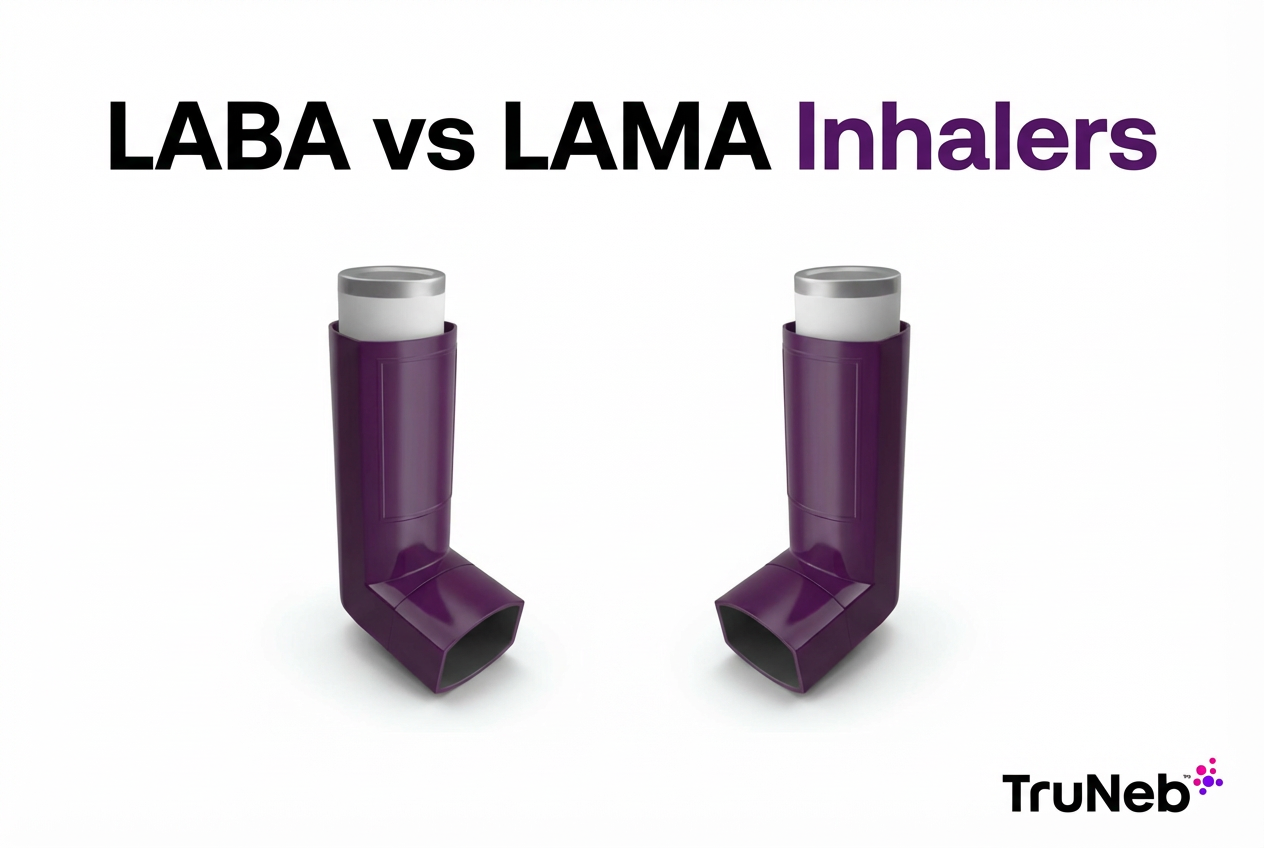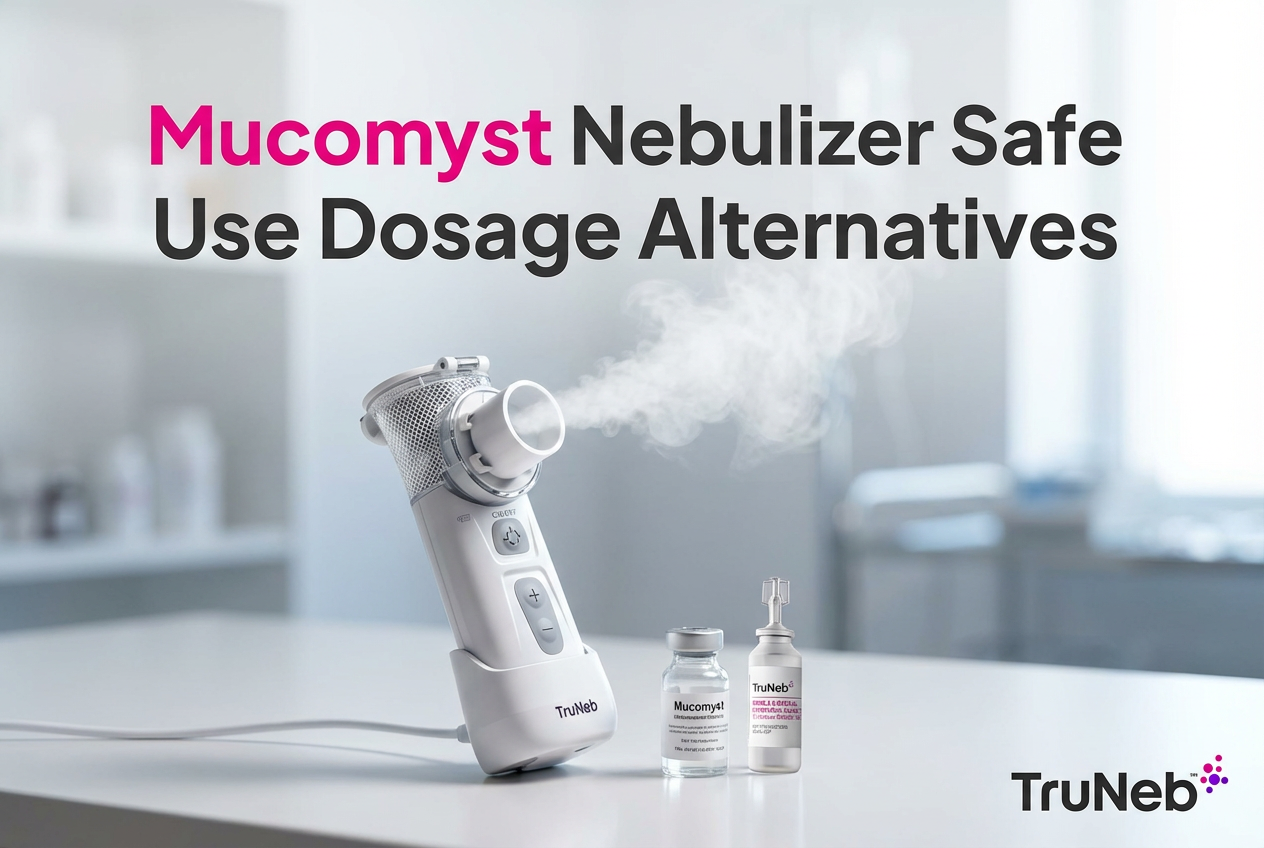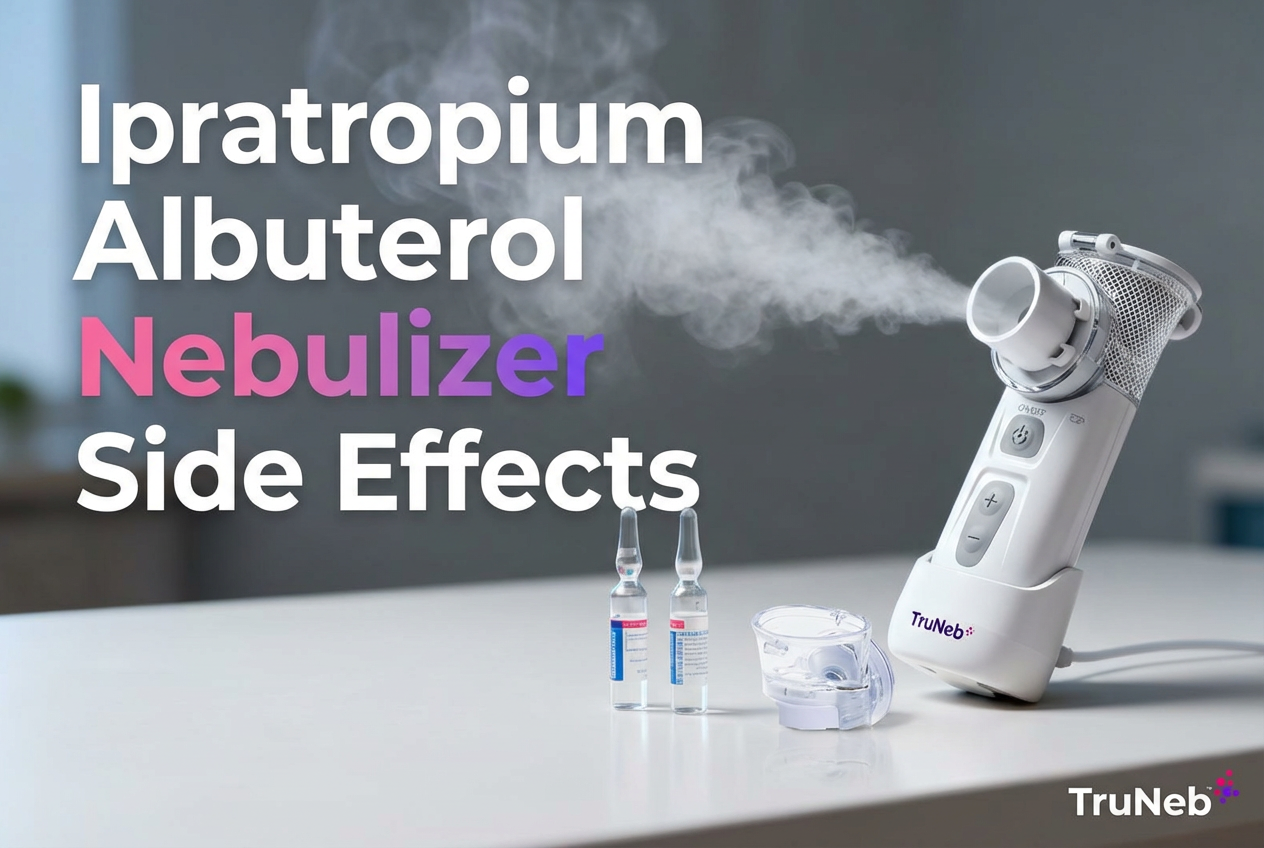On this page
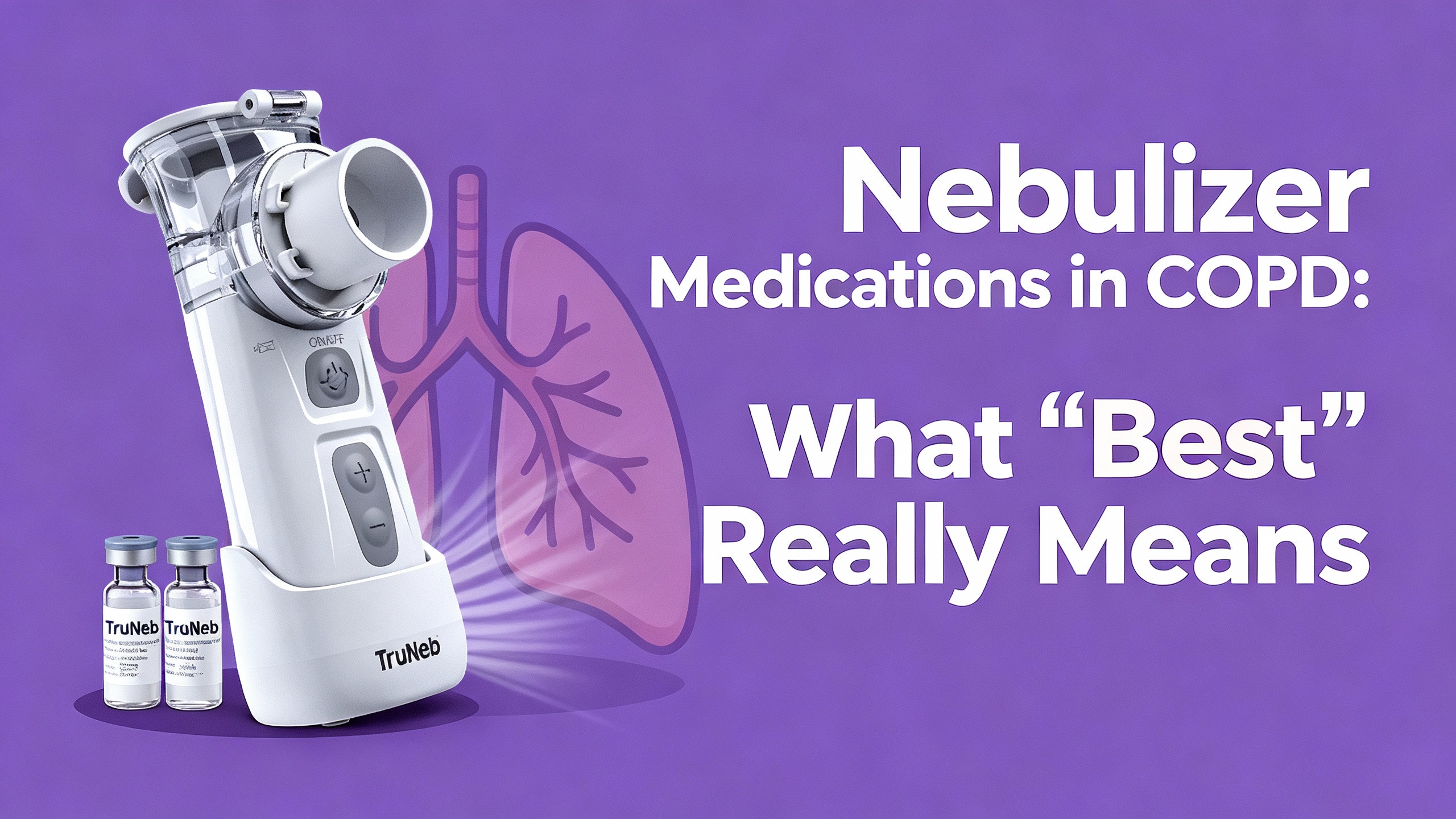
COPD care commonly relies on inhaled medicines. You can take them through handheld inhalers or a nebulizer, which turns liquid medicine into a fine mist you breathe in. The best nebulizer medication for COPD depends on the moment you’re in: quick relief during a flare-up versus steady control day to day.
Doctors typically use fast-acting bronchodilators during a flare and long-acting options for daily control. A nebulizer can help if inhalers are hard to use or you’re too short of breath to coordinate a deep inhaler breath.
A portable device like the TruNeb™ portable mesh nebulizer can make treatments easier at home or on the go.
One-liner takeaway: There’s no single “best” nebulizer medication for COPD—your needs differ during a flare versus day-to-day control.
Best Nebulizer Medication for a COPD Flare-Up
During a COPD exacerbation (a sudden worsening), a commonly used and effective nebulizer treatment is a combination of albuterol plus ipratropium bromide. Clinics and ERs routinely give this premixed solution (DuoNeb). The two medicines open your airways in different ways, which can improve breathing more than either one alone.
- Albuterol is a short-acting beta agonist (SABA) that relaxes airway muscles fast.
- Ipratropium is a short-acting anticholinergic (SAMA) that adds extra bronchodilation and can last a bit longer.
If you can’t tolerate one part of the combo, your doctor can prescribe a single medicine, like albuterol alone. In severe attacks, doctors sometimes add oral or IV steroids, oxygen, or hospital therapies.
One-liner takeaway: In a flare, albuterol + ipratropium via nebulizer is a go-to combo for fast, broader airway opening.
Daily Maintenance: Nebulizer Meds for Long-Term Control
For day-to-day control, long-acting bronchodilators via nebulizer can help keep airways open and reduce symptoms.
Long-acting beta agonists (LABAs)
These provide around 12-hour control.
- Formoterol (Perforomist) improves lung function and daily symptoms in studies.
- Arformoterol (Brovana) can reduce rescue use and improve breathing scores.
Long-acting anticholinergic (LAMA)
- Revefenacin (Yupelri) is a once-daily nebulized LAMA that provides around 24-hour bronchodilation. It can be helpful if inhaler LAMAs are hard to use.
Steroids and other add-ons
- Budesonide (Pulmicort Respules) is an inhaled corticosteroid delivered by neb. It is sometimes added if you have frequent flare-ups or asthma overlap.
- Acetylcysteine (a mucolytic) can thin thick mucus in select cases.
Your “best” maintenance plan is personal. Some people do well on a LABA, others on a LAMA, and some need both classes (commonly by inhaler, sometimes by neb if inhalers aren’t a fit). Talk with your doctor about what fits your lungs, your routine, and your goals.
One-liner takeaway: For daily control, think LABA or once-daily LAMA by nebulizer; add a steroid or mucolytic only if your doctor recommends it.
Quick Reference: Common Nebulizer Medications
| Medication | Class | Key Use Case | Key Benefit | Notes |
|---|---|---|---|---|
| Albuterol | SABA | Rescue during COPD flare-ups | Fast airway muscle relaxation | Common rescue medicine; part of many flare plans |
| Ipratropium | SAMA | Add-on bronchodilation in flares | Complements SABA via different pathway | Commonly combined with albuterol |
| Albuterol + Ipratropium (DuoNeb) | SABA + SAMA | Go-to combo during exacerbations | Broader bronchodilation than either alone | Premixed neb solution used in urgent care and ERs |
| Formoterol (Perforomist) | LABA | Maintenance bronchodilation | Around 12-hour symptom control | Nebulized LABA option |
| Arformoterol (Brovana) | LABA | Maintenance bronchodilation | Can reduce rescue use | Nebulized LABA option |
| Revefenacin (Yupelri) | LAMA | Once-daily maintenance bronchodilation | Around 24-hour control | Nebulized LAMA option |
| Budesonide (Pulmicort Respules) | Inhaled corticosteroid | Added in select patients with frequent flares or asthma overlap | Lowers airway inflammation | Rinse mouth after use |
Use this table to see common medication classes and how they’re used. Your prescription determines the exact medication and schedule. Your doctor will choose the exact medication and schedule for you.
Nebulizer vs. Inhaler: Which One Makes Sense?
Inhalers are small and fast. They work well when used with the right technique, whether a metered-dose inhaler (MDI) or a dry powder inhaler (DPI). Nebulizers are slower but easier—you just breathe normally while the machine makes the mist. For most people, both tools have a place.
Nebulizers can help if:
- You struggle to time a deep breath with an inhaler.
- Your inspiratory flow is low (hard to pull medicine from a DPI).
- You’re in a bad flare and too breathless to coordinate.
When used correctly, inhalers (MDIs/DPIs) and nebulizers deliver medicine equally well. But real-life technique errors are common, so a nebulizer can be more reliable for some people. A quiet portable mesh device, like TruNeb, can also help you treat anywhere without a bulky setup.
One-liner takeaway: Use the tool you can use well—for many, that’s an inhaler daily and a nebulizer when symptoms spike.
Safety, Side Effects, and Usage Tips for Nebulizer Medications
- Use only what your prescription says. Don’t mix or change medicines or doses on your own.
- Rinse your mouth after steroid nebulizers to lower the risk of thrush (budesonide is one example).
- Clean your nebulizer parts after each use and disinfect on schedule to prevent infections.
- Watch for common side effects:
- SABAs (like albuterol): jitteriness, fast heartbeat
- SAMAs (ipratropium): dry mouth
- LABAs (formoterol, arformoterol): headache, tremor
- Steroids (budesonide): oral thrush—rinse after use
- Steam inhaler ≠ nebulizer. You might see boxes labeled “steam inhaler”—these are NOT for breathing prescription medications.
- Know when to escalate. ⚠️ If you have severe symptoms such as blue lips or face, confusion, severe shortness of breath at rest, or trouble speaking in full sentences, seek emergency medical care immediately.
- Check in if control slips. If your symptoms don’t improve on your current plan or you’re using rescue treatments more frequently, talk to your doctor.
One-liner takeaway: Use only prescribed solutions, keep your device clean, and rinse after steroid treatments to reduce risks.
Frequently Asked Questions
Tap or click a question below to see the answer:
During a flare, clinicians commonly use a combination of albuterol + ipratropium (often as a premixed solution). Using both can open airways more than either medicine alone. Seek medical care if symptoms are severe or not improving.
Common options include short-acting bronchodilators (albuterol, levalbuterol, ipratropium), long-acting bronchodilators (formoterol, arformoterol, revefenacin), and add-ons like the inhaled steroid budesonide in select cases. Your prescription will specify exactly what’s right for you.
Not automatically. When used correctly, inhalers and nebulizers can deliver medicine equally well. Nebulizers can be easier if inhaler technique is difficult or during severe flares when coordination is hard.
Yes, if prescribed as maintenance therapy (for example, a long-acting LABA like formoterol or a once-daily LAMA like revefenacin). Follow the exact schedule your clinician provides; don’t exceed prescribed doses.
Budesonide can be nebulized. It’s sometimes added for people with frequent flare-ups or asthma overlap. Rinse your mouth after use to reduce the risk of thrush.
Bottom Line and Next Steps
For flares, a combo neb of albuterol plus ipratropium can bring faster, broader relief. For daily control, long-acting nebulized bronchodilators like formoterol, arformoterol, or once-daily revefenacin can help you stay steady. If inhalers are hard to use, a portable nebulizer like TruNeb can make treatments simpler.
Bring this guide to your next visit. Ask which rescue plan and which maintenance option fit your lungs and your routine.
Disclaimer: This article is for informational purposes and is not a substitute for professional medical advice. Always consult your doctor about your health and treatments.
